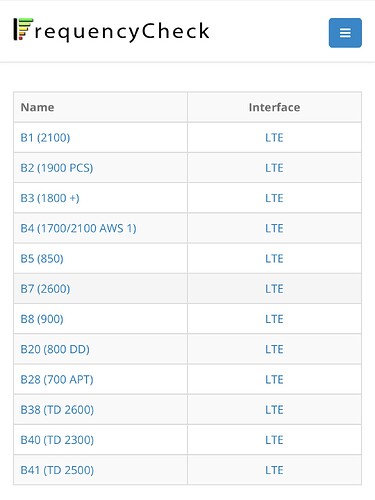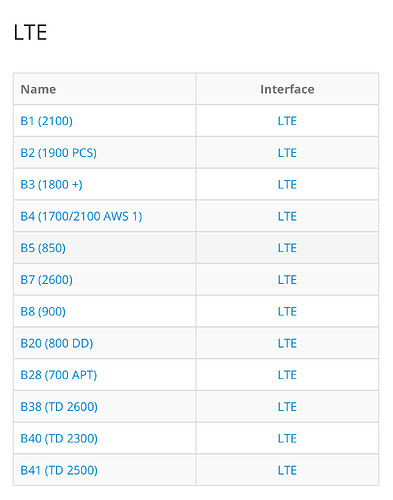For the not so tech savy, one option is to locate the model number - version and contact your Mobile service provider. The device needs to support the bands and communication technology used by the provider.
For those more tech savy the device Cellular capabilities are typically listed in the product specifications. To note there are models specific to Australia, hence important to be sure the specifications are for the Aussie version.
EG. iPad 9th Gen, Model A2603.
One could use this detail to refer to one of the previous posts for listings of each carriers 4G bands and services to assess. As a quick check, I found where there is both 4G and 3G service, the data devices I own preferably use 4G. When switching to 3G the data rate drops significantly. Depending on the device it will indicate if it is connected to 3G or 4G for data.
2 Likes
Not just phones and tablets. Also dongles. Also some embedded systems.
No doubt a whole lot of those will need to be replaced. But you are unlikely to make the mistake of buying one of those to make phone calls thinking it has a SIM and is 4G and so it must do voice.
3 Likes
Hi, we are still travelling in our motor home so unfortunately there are gaps in picking up on valuable feedback on the issue that I raised. I am amazed at what appears to be a mind bending technical maze on this issue. I have been with Redmi for a number of years as these come under the Xiaomi brand and have been the most popular phone in India which is a huge market. I will list the details supplied under the “about phone” heading. The Redmi Note 9 Pro details are:- MIUI version. MIUI Global. 14.0.3 Stable followed by 14.0.3(SJZMIXM). Android Version SKQ1.211019.001. Under info and specs. are CPU Octa-core Max 2.32GHz, Model. M2003J6B2G.
All of this is mostly above my head. I hope this provides you with what you are after.
The other phone is the Redmi Note 10. MIUI version, MIUI Global 14.0.8 Stable. followed by 14.0.8.0(SKGMIXM) Android Version SKQ1.210908.001, Model M2101K7AG.
I will keep my eyes open for your response. Many thanks for taking the time to get involved. It is really appreciated. kenmar1@aussiebroadband.com.au.
3 Likes
Model numbers are very important in determining what bands are supported by each device. There are Note 9 devices that do not have much support for the 4G LTE bands (MHz wavelengths that signals are transmitted on).
Using the model numbers provided from your devices gives the following results:
The Note 9 you have supports the following 4G LTE bands, this should be all the bands necessary for successful 4G use.
Your Note 10 supports the following 4G LTE bands
So it seems both devices support the bands that will be in use in Australia.
I believe the LTE Protocols are more limited in the Note 9 so a maximum download of 150 Mbps is what can be expected. On the Note 10 I believe it supports up to 600 Mbps download. Both support 50 Mbps upload, and models support the B40 and the B28 bands as well as the more mainstream ones.
When reading the tables as an example the B7 (2600) band means it is able to use the 2600 MHz band of transmission.
APT in B28 (700 APT) means Asia-Pacific Telecommunity band plan (Asia-Pacific Telecommunity band plan - Wikipedia)
AWS means Advanced Wireless Service (Advanced Wireless Services - Wikipedia)
TD means Time Division (What are FD LTE and TD LTE? | Capacity Media)
PCS means Personal Communications Services (PCS definition (Phone Scoop))
4 Likes
I used the Telstra 3498 test for my Samsung Galaxy 8± it told me that the phone would not work for calls or 000 although the phone does use VoLTE - checked with Samsung who state that of course it will use VoLTE as it does now and can make 000 calls over VoLTE- the Tesltra advice seems to be totally wrong- is this a ploy to sell more mobiles?
1 Like


